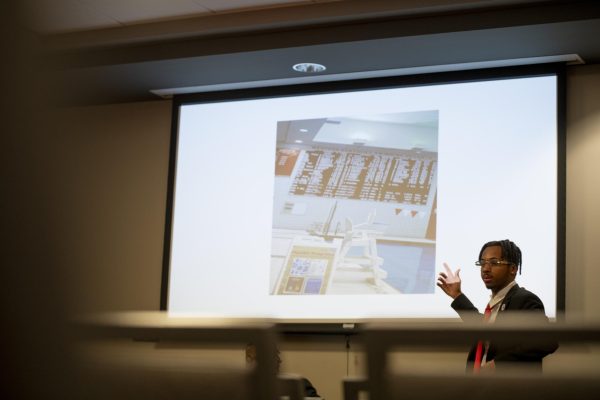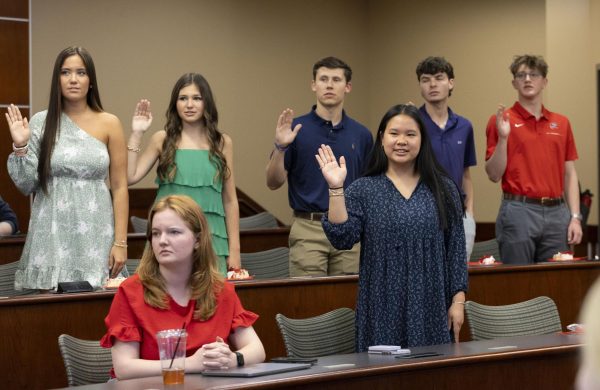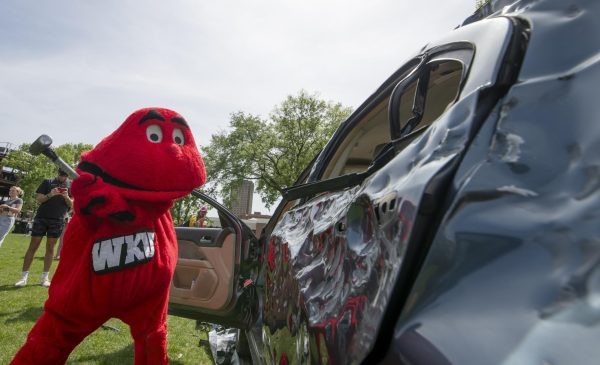University buys land for preserve
April 22, 2004
Frogs, toads and owls could be heard throughout the night. Birds took over the next morning.
Biology faculty members camped out among the noisy wildlife on Saturday night near the Green River.
The reason: to mark Western’s official ownership of the land.
A check was presented to university officials on Saturday for a $1.1 million grant to purchase tracts of land to create the Upper Green River Biological Preserve near the Green River in Hart County.
President Gary Ransdell accepted the check from the Kentucky Heritage Land Conservation Board.
The presentation was symbolic because the land had already been purchased, he said.
“It’s just a pristine, beautiful place that needs to be preserved …” he said.
The preserve will be used for teaching and research, he said.
Saturday was the grand opening of the 671 acre preserve located on the north and south side of the Green River, about one mile from the Mammoth Cave National Park, said Ouida Meier, co-director of the preserve.
It took four years for Western to acquire all the tracts of land, Meier said. A proposal for purchasing the land was submitted to the conservation board in November 2000.
Western bought tracts of land as they received money from the board, Meier said. The last tract was bought in January.
The conservation board awards funding quarterly and was unable to give Western all of the money for the preserve at one time, said Mary Jean Eddins, the board’s internal policy analyst.
The proposal was approved in January 2001.
The conservation board gives money to state agencies who want to purchase land with unique features, Eddins said.
The preserve has seven listed endangered species, Meier said. It includes a mussel bed and migratory bird corridor.
The conservation board is funded by a portion of the unmined mineral tax, Kentucky nature license plates purchases and environmental fines.
Students and faculty have already begun working on the preserve, Meier said.
“With all the surveys and studies that are going on, there are quite a lot of students and faculty that are already involved,” she said.
A group of lepidopterists will arrive this weekend to study the moths and butterflies on the preserve, Meier said. There will be other studies done in the future on species such as birds, mammals and reptiles.
The biology department will also collaborate with Mammoth Cave on several restoration projects, including one that will help preserve mussels and a project that will help restore the American Chestnut Tree, Meier said.
Students and faculty also helped prepare the preserve for its opening. About 70 cubic feet of trash was removed from the property during the past two months, Meier said.
Not all the work on the preserve will be connected with the biology department.
Students and faculty from other disciplines are welcome, Meier said.
The Gardner House, which is one of Hart County’s oldest homes, is on the property and will be occupied by the folk studies program, she said.
Western’s archeology department will also do some studies on the land.
Meier said any student interested in working on the preserve should contact her.
Reach Shawntaye Hopkins at [email protected].

























